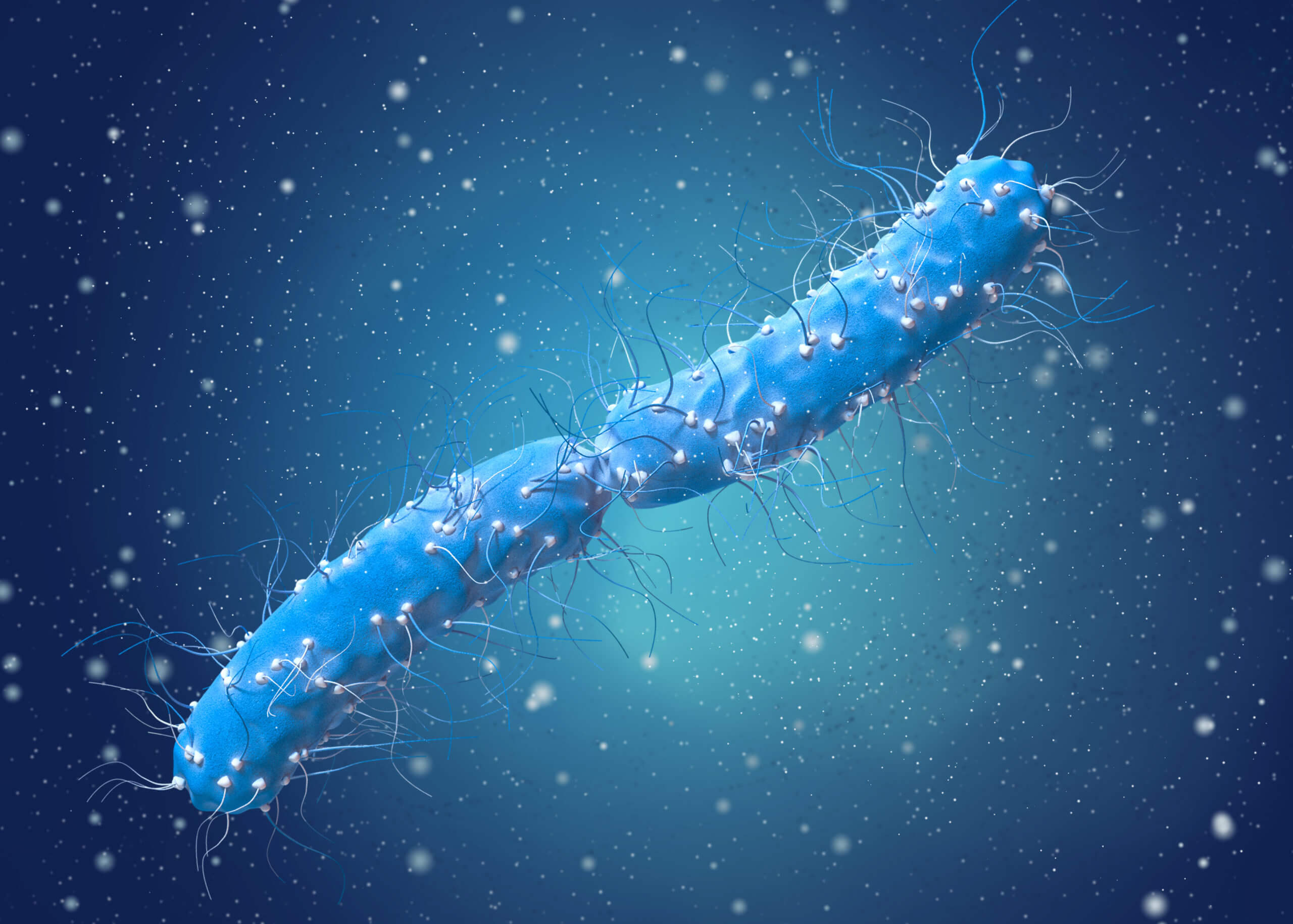For decades, scientists have been stumped at how bacteria like E. coli move around. After 50 years, researchers from University of Virginia School of Medicine have cracked the case.
According to their findings, bacteria move by coiling appendages and creating makeshift propellers out of one protein.
“While models have existed for 50 years for how these filaments might form such regular coiled shapes, we have now determined the structure of these filaments in atomic detail,” says Edward Egelman, PhD, from UVA’s Department of Biochemistry and Molecular Genetics. “We can show that these models were wrong, and our new understanding will help pave the way for technologies that could be based upon such miniature propellers.”
To conduct the work, the team used cryo-electron microscopy (cryo-EM) and computer modeling techniques to clearly see the structural components of these propellers on an atomic level, which is what microscopic view lacks and therefore has been a caveat of previous efforts.
The appendages that bacteria have are called flagellum, or flagella for plural. They contain thousands of subunits that are all identical, which scientists commonly thought meant that they were long and limber. However if this were true, it would mean that the bacteria couldn’t move since a line can’t generate a spring. It now makes sense that bacteria produce a coiled shape to gain thrusting momentum for spread, which scientists have referred to as “supercoiling.”
Egelman and colleagues successfully discovered that bacteria are able to do this since their flagella is made up of a protein that has the versatility to exist in 11 different ways. Each state that the flagella is in works together to contribute to its coiling ability, forming a corkscrew.
The researchers specifically examined the flagella of Saccharolobus islandicus, which is an archaea and distinct from bacteria. They discovered that the protein shaping the flagellum exists in 10 states and led to corkscrews. These results are consistent with their experiments despite structural differences between archaea and bacteria.
From these findings, the researchers concluded that this amazingly represents “convergent evolution,” which describes when different organisms independently evolve to have the same types of traits.
“As with birds, bats and bees, which have all independently evolved wings for flying, the evolution of bacteria and archaea has converged on a similar solution for swimming in both,” says Egelman. “Since these biological structures emerged on Earth billions of years ago, the 50 years that it has taken to understand them may not seem that long.”
This study is published in the journal Cell.
